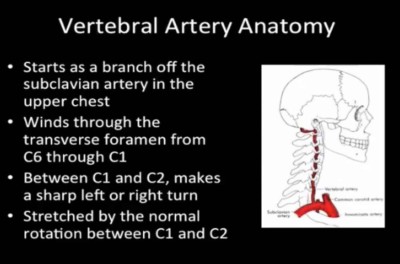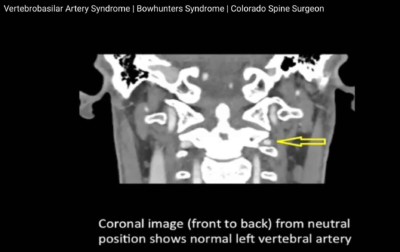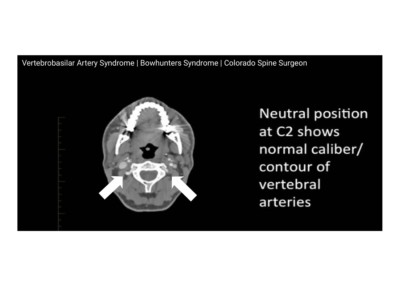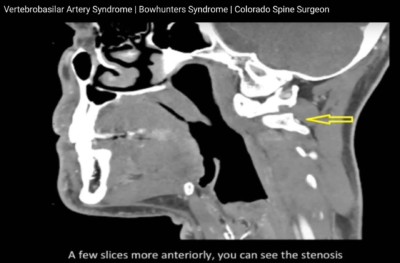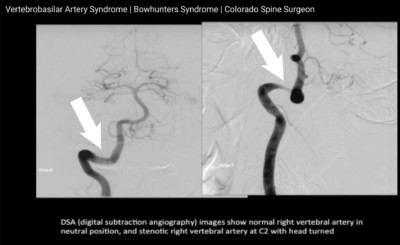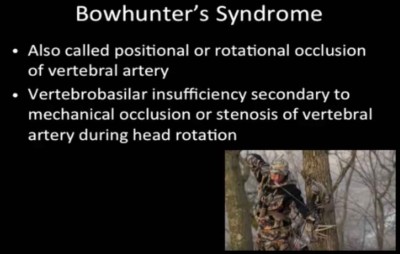An Overview of Vertebrobasilar Artery Syndrome
(also known as: Vertebrobasilar Artery Insufficiency, Vertebrobasilar Artery Ischemia and “Bow Hunters” Syndrome)
Vertebrobasilar artery syndrome is due to a temporary loss of blood flow from the vertebral artery to the base of the brain. The syndrome occurs when rotating the head to the side and having the vertebral artery become temporarily occluded due to an abnormal bone spur or ligament.
There are many lower brainstem and upper cervical disorders that can mimic this syndrome and in the 30 years I have practiced, I have seen vertebrobasilar artery insufficiency two times but have seen the symptom complaints hundreds of times.
Are you suffering from symptoms of Vertebrobasilar Artery Syndrome?
Would you like to consult with Dr. Corenman about your condition?
You can set up a long distance consultation to discuss your
current X-rays and/or MRIs for a clinical case review.
(Please keep reading below for more information on this condition.)
Vertebral Artery Anatomy
The vertebral artery starts as a branch of the subclavian artery in the chest. It then winds through the transverse foramen of C6 up to C1 (skips the C7 transverse foramen). Between C1 and C2, this artery makes a sharp right or left turn (depending upon the side). The artery is stretched by the normal rotation that occurs between C1 and C2.
- Symptoms (while turning the head to the side of stenosis)
- Dizziness
- Vertigo (room spins)
- Visual disturbances (difficulty with focus and “spots” before the eyes)
- Nystagmus (eyes pulsate back and forth)
- Ataxia (difficulty with keeping balance)
Vertebrobasilar Artery Syndrome
Wallenberg’s Syndrome
This syndrome is a stroke or arterial occlusion as the base of the brain and can occur as an extension of vertebrobasilar artery insufficiency. This is an infarction (stroke) of the posterior inferior cerebellar artery.
Symptoms include:
- Sensory loss on the same side of the face and opposite side of the body
- Dysphagia (problems swallowing)
- Dysarthria (problems speaking)
- Ataxia (difficulty with keeping balance)
- Vertigo (the room spins)
Diagnosis
Diagnosis is made with a CT angiogram with the head in neutral position and in the position of the symptoms. Comparison of the two vertebral artery images confirms the stenosis.
Treatment generally includes therapy and strengthening. If the syndrome persists, surgery to remove the spur or occasional fusion of C1 to C2 can be utilized.
To learn more about vertebrobasilar artery syndrome, please contact the Vail, Aspen, Denver and Grand Junction, Colorado area office of spine specialist and neck doctor Dr. Donald Corenman.

